Hey there, fellow adventurers! Today, I want to take you on a journey back in time to the rugged winter of 1886 in the beautiful state of Montana.
The open-range cattle industry was flourishing, with massive herds roaming freely across the vast plains. Cattle ranches dotted the landscape, and the livestock empire seemed invincible.
But little did these ranchers know that the winter of 1886 would bring about a brutal and deadly season unlike any they had ever experienced.
The once-thriving cattle operations were now faced with the catastrophic loss of livestock as the heavy snows made it nearly impossible for the cattle to find food and water sources.
Can you picture the scenes of despair? Thousands of dead cattle, bloated and frozen, clogged up rivers as the bitter cold took its toll.
The old-time cattle industry, after the tragic winter of 1886, with its large-scale companies and cattle drives, was brought to its knees.
Ranchers struggled to survive as their stocks of livestock dwindled, and the very future of their livelihoods hung in the balance.
So, my dear friends, if you’re ready to embark on this incredible journey, join me as we uncover the gripping tales of the Montana winter of 1886.
- Related article: Montana’s History
Prepare yourself for stories of tragedy and triumph, resilience and resourcefulness, and a glimpse into a time when the very soul of the cattle industry was put to the ultimate test.
Get ready to discover the untold secrets of a winter that forever changed the lives of those who called Montana home.
Montana Winter of 1886: The Big Die Up
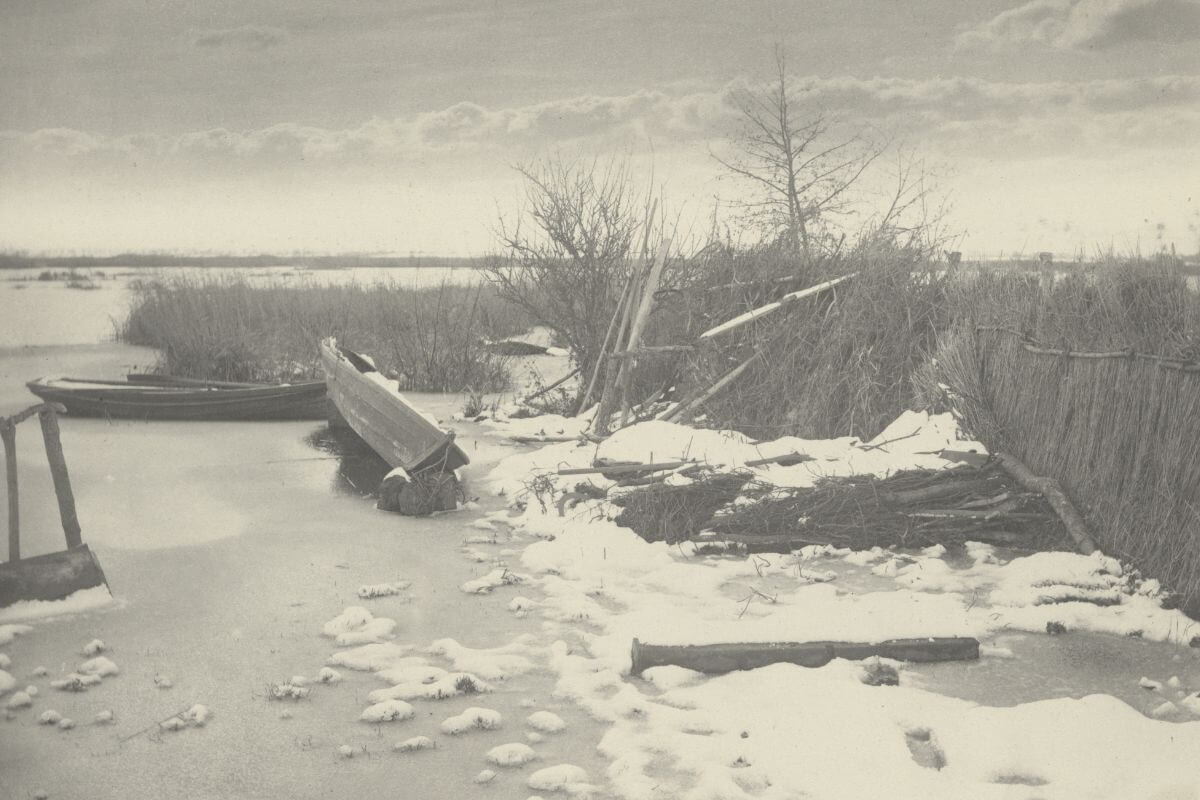
Step into the frigid depths of Montana’s winter of 1886, a season so harsh and unforgiving that it earned the moniker “The Great Die Up” among other chilling titles.
The Winter of 1886 was also referred to by ranchers as “The Big Die Up” or “Death’s Cattle Round-Up” due to the devastating impact it had on the cattle population across the Great Plains.
Amidst several seasons of mild winters, gentle spring rain, tall grass, and flowing streams, a sudden change occurred.
A rainless spring and scorching hot summer depleted the water sources, scorched much of the grass, and plunged the region into a severe drought.
As winter approached, millions of heads of livestock were in distress, ill-prepared to endure the harsh conditions ahead.
This catastrophic event forever altered the open-range cattle industry, leaving it battered and broken in its wake.
As the continuous snow fell, a relentless wave of loss swept across the plains. The once mighty cattle empire crumbled, with countless herds of cattle succumbing to the bitter cold.
The carcasses of bloated cattle dotted the landscape, a haunting reminder of the disastrous winter that had befallen them.
In the aftermath of this devastating event, the cattle industry faced a reckoning.
The open-range grazing practices that had once defined Montana’s landscape were forsaken, replaced by smaller-scale ranching ventures.
The harsh winter affected Theodore Roosevelt’s ranch near Medora, Dakota Territory, just like many others in the region.
In a letter to his friend Henry Cabot Lodge, Roosevelt expressed how the winter had been devastating for the country of the northwest, causing crippling losses.
For the first time, he found himself unable to enjoy his visit to the ranch and looked forward to returning home.
The scale of the loss was unfathomable, forcing ranchers to reassess and adapt their approach to livestock management.
The winter of 1886 would forever be etched in Montana’s history, a testament to the unforgiving power of nature.
It served as a wake-up call, forcing the industry to confront the reality of its unsustainable practices.
The Big Die Up marked the beginning of a new era, one that embraced federal rangeland management to prevent further environmental degradation caused by livestock.
Montana Winter of 1886
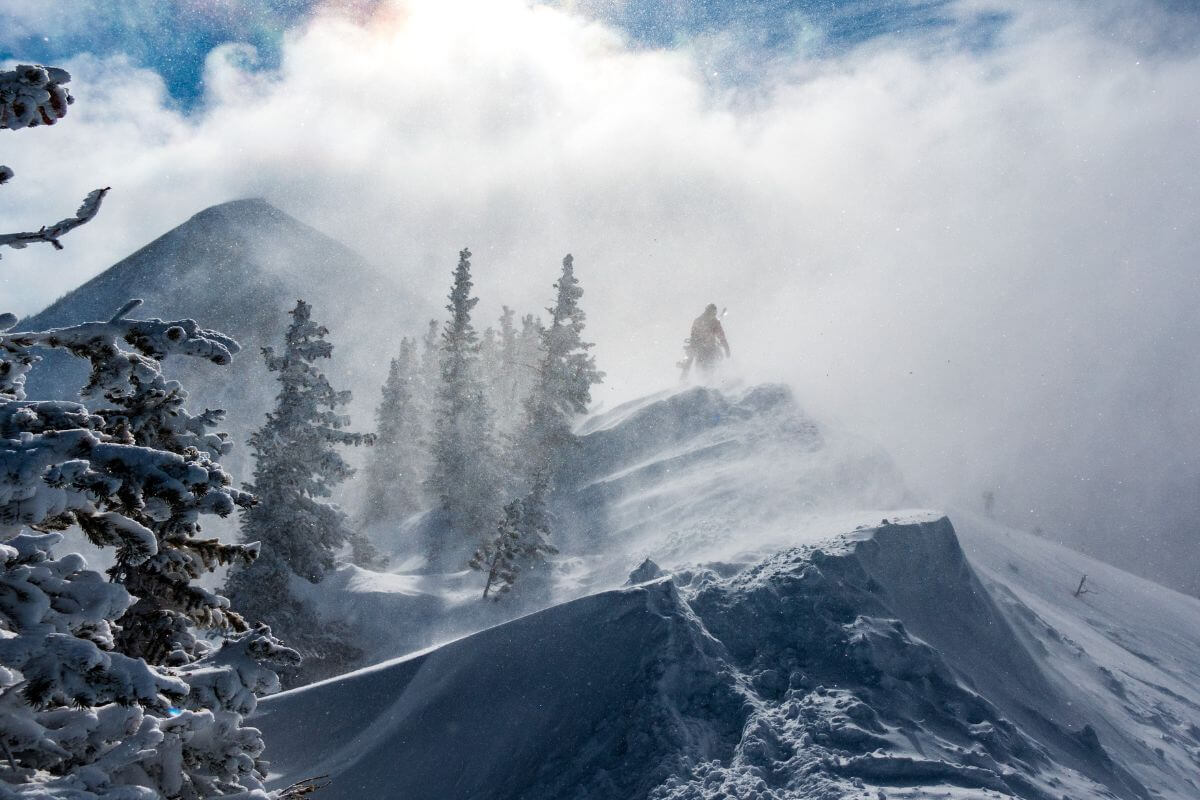
As the biting cold settled in and the snow began to pile high, Montana witnessed the unfolding of a brutal winter that would forever change the landscape of its cattle industry.
The open-range cattle empire, known for its massive herds and vast expanses, crumbled under the weight of the relentless snowfall.
This cataclysmic event not only forced ranchers to reevaluate their practices but also set the stage for federal rangeland management in an effort to preserve the fragile balance of the land.
Before Montana Winter 1886: The Open Range Cattle Industry
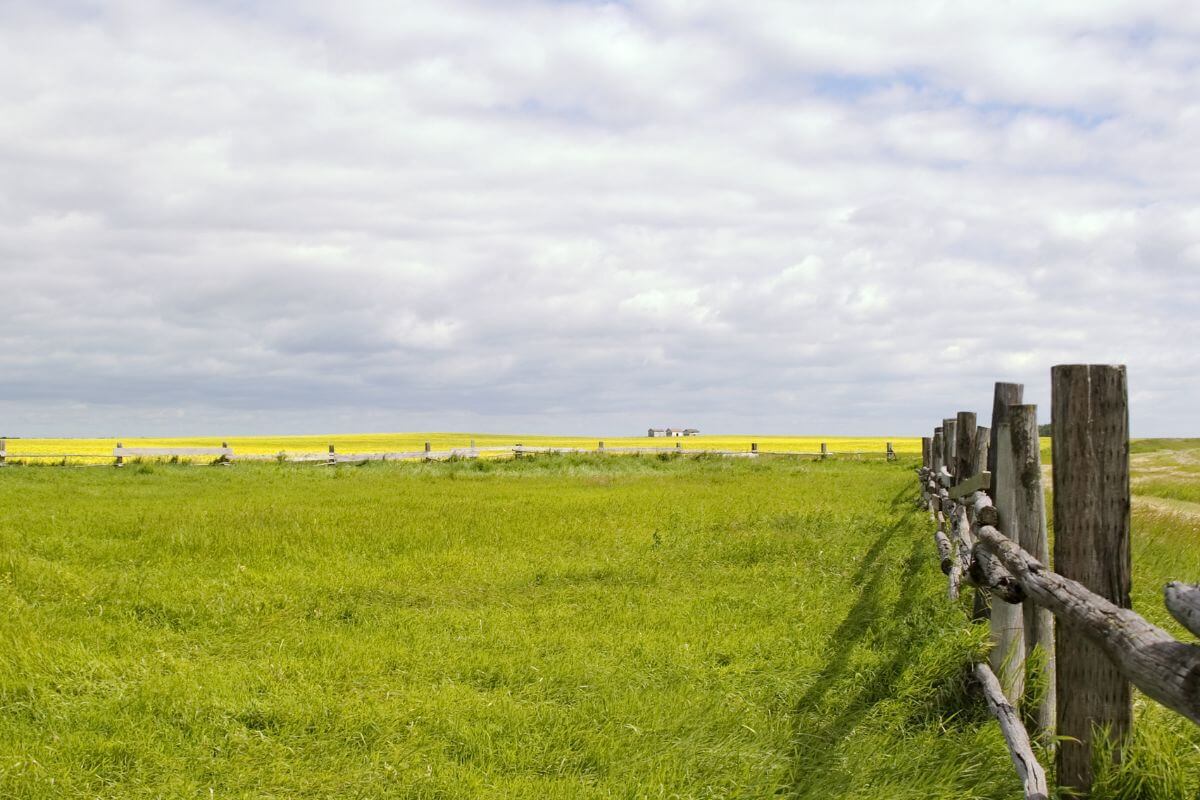
The open range system in America had its origins during the Civil War from 1861 to 1865. It was during this time that the Texas herds experienced significant growth.
Large groups of cattle roamed freely and unbranded on unfenced public land.
Initially, Texas cattle were driven to eastern markets, but they encountered resistance along the way due to the presence of ticks causing ‘Texas fever.’
As a result, the livestock trails shifted westward, leading the herds on a long journey to the northern ranges, where they would spend a year or two fattening up before being transported east.
In the late 1870s, the cattle industry thrived as herds were purchased in Texas and driven to the unoccupied lands of the northwest.
This profitable enterprise led to the accumulation of great wealth. Overstocking of the Montana range was common since the early 1880s.
In the fall of 1883, around 600,000 cattle, along with sheep and horses, filled the range, reaching its capacity.
The natural increase of herds and the arrival of more Texas cattle in 1884 exacerbated the problem, leading to thinner grass and a higher number of animals per acre.
By 1885, the effects of overgrazing in Montana were evident, with 20 acres needed to feed one cow initially, increasing to nearly 25 acres after two years, and up to 40 acres after six years.
Yet, despite the protests from Montana cattlemen about the detrimental impact of uncontrolled herd growth on the land, the influx of cattle continued.
Montana’s cattle population grew from 545,000 to 1,050,000 head.
Little did they know that the winter of 1886 would bring unprecedented challenges to the open-range cattle industry.
Montana Winter of 1886: Effects on Ranching
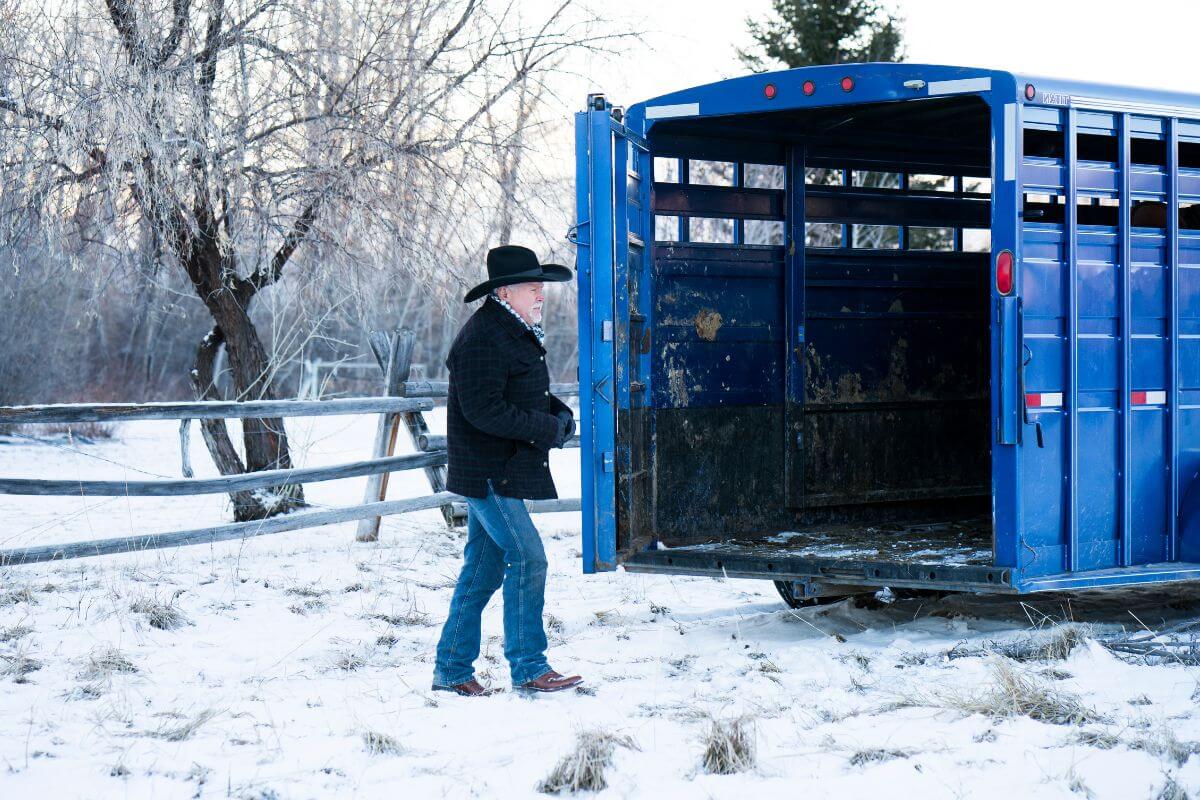
The Montana Winter of 1886 was a brutal and unforgiving season that wreaked havoc on the ranching industry. The impact on ranchers and their operations was devastating.
As the fierce winter descended upon the land, ranchers faced immense challenges, including the loss of livestock and the struggle to find sufficient feed and water sources.
The winter of 1886 arrived early and hit hard. Cattle that had not yet developed the ability to endure the harsh Montana winters suffered greatly.
With a dry summer and meager grass crop preceding the intense winter, the cattle entered this dangerous season already weakened and in dire need of sustenance.
Snow covered the range in November, making it incredibly difficult for the cattle to access the limited grass beneath.
Just when relief seemed to be on the horizon in January with the anticipated chinook winds melting the snow, freezing temperatures returned and encased the remaining grass in a layer of ice.
Grazing became impossible, and cattle perished from freezing or starvation. By spring, the losses suffered by ranchers were staggering.
In different regions in the great plains, 60 to 95 percent of cattle became part of the death toll. The winter of 1886 foreshadowed the demise of the open-range era.
It was a time of hardship, but it also marked the beginning of a new chapter for ranching in Montana.
Open Range Cattle: The End of an Era

The Winter of 1886 caused a significant shift in the open-range cattle industry, delivering a severe blow to stock growers and investors. It marked the end of an era in the open-range cattle business.
Unemployed ranchers struggled to find meals, as the large ranches that once supported them were no longer available or couldn’t offer help. Some ranchers turned to cattle rustling.
Armed with a long rope and a running iron, they resorted to stealing the very cattle they had once herded as paid employees. It was a desperate and risky endeavor driven by survival.
While small-scale ranchers also faced their fair share of challenges during the harsh winter, their smaller acreages and herds allowed them to fare relatively better.
With the ability to closely manage their livestock, tend to them during winter storms, and move them to areas with available forage, small-scale ranchers proved to be more resilient.
The disastrous winter forced the livestock industry to implement measures to prevent future tragedies.
Ranchers and cattle associations joined forces to address overgrazing and improve land and livestock management.
Fencing played a crucial role in the transformation, with miles of fences being erected to end open-range grazing and enable controlled grazing and the regrowth of forage.
In an effort to prevent another major catastrophe, many in the industry have adopted practices from small-scale ranchers.
Out of necessity, some ranchers turned to farming, becoming farmers, and opted for smaller herds while utilizing smaller pastures fenced with barbed wire.
The lessons learned from the winter of 1886 have reshaped the cattle industry, ushering in a new era of more sustainable and resilient practices.
Montana Winter of 1886 Final Thoughts
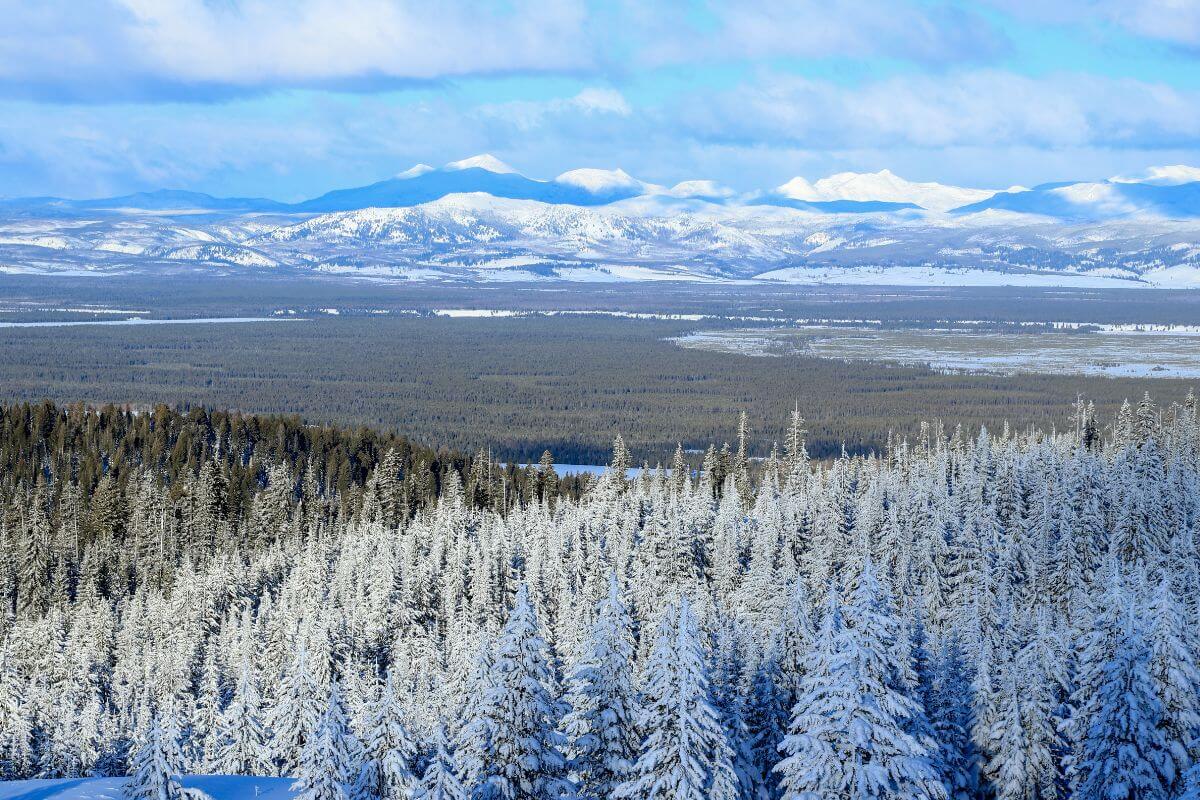
The Montana Winter of 1886 left an indelible mark on the ranching industry, reshaping practices and forever altering the landscape.
The harsh winter brought about a reckoning for the old-time cattle industry, as ranchers were forced to confront the devastating loss of livestock and the challenges posed by the harsh climate.
One of the significant changes that emerged from Montana’s disastrous winter of 1886 was the introduction of barbed wire fences.
These fences served as a solution to the open-range industry, preventing cattle from wandering and allowing for controlled grazing.
The sprawling herds that once roamed freely were now confined, marking the end of an era. Multiple factors also contributed to the demise of Montana’s old-time cattle industry.
The continuous snowfall, with drifts piling up to feet, made it nearly impossible for ranchers to protect their cattle and provide them with sufficient winter feed.
The loss of water sources due to freezing also exacerbated the already dire situation. As a result, millions of cattle perished, and the once-thriving empires crumbled.
In the aftermath of this catastrophic winter, ranching practices had to adapt.
Ranchers learned the importance of proper land and livestock management, leading to improved grazing techniques and regrowth of forage.
While the Montana Winter of 1886 brought unprecedented hardship, it also forced the industry to evolve and paved the way for more sustainable and resilient ranching practices.
Montana Winter of 1886 FAQs
1. What Was Montana’s Coldest Winter in History?
Montana’s coldest winter in history was recorded on January 20, 1954, when the state experienced a record-breaking cold temperature of minus 70°F.
The observation took place at a mining camp located near the Continental Divide, not far from Rogers Pass near Helena. The reading was documented by a cooperative observer from the National Weather Service.
2. What Occurred During the Winter of 1886?
In the winter of 1886-1887, a devastating event took place as hundreds of thousands of animals, primarily cattle, perished from Montana to Texas.
The region had experienced a dry summer, and the calamity unfolded with relentless blizzards starting in November and lasting until February.
3. How Do Cattle Endure Montana Winters?
Cattle in Montana endure winters by growing thick winter coats, accumulating body fat for insulation, and seeking shelter from harsh weather conditions.
They huddle together for warmth, consume adequate nutrition, and have evolved to efficiently digest fibrous plant material to generate heat.
Proper management and care by cattle ranchers also play a crucial role in ensuring their well-being during the winter months.
4. Is Montana the Coldest State?
Montana is one of the coldest states in the US, along with Alaska, North Dakota, Minnesota, Wyoming, Maine, Wisconsin, Idaho, Vermont, and Michigan.
Alaska holds the title of the coldest state with an average annual temperature of 30.7°F, followed by North Dakota, the second coldest state, with an average temperature of 42.4°F.
5. What Causes the Most Fatalities During Winter?
During winter, fatalities are caused by a variety of factors. One major cause is coronary thrombosis, which accounts for around half of the excess winter deaths.
These deaths tend to occur roughly two days after the peak of a cold spell.
The other half of winter deaths are linked to respiratory diseases, with the peak occurring approximately 12 days after the peak cold.
If you want to learn more about Montana, keep your mind engaged with these articles:
- Interpreting Montana 406
- Secretive Military Sites in Montana
- Origins of Montana State Prisons
- Montana’s Notorious Killers
- https://www.umt.edu/this-is-montana/short-notes/stories/events-shaped-montana.php
- http://animalrange.montana.edu/ANRS_history_page.html
- https://www.nps.gov/grko/learn/historyculture/winter.htm
- https://www.nps.gov/parkhistory/online_books/hh/thro/throl.htm
- https://www.nps.gov/museum/exhibits/grko/risk.html
- https://pubmed.ncbi.nlm.nih.gov/12546188/
- https://commons.wikimedia.org/wiki/File:Peter_Henry_Emerson_and_T.F._Goodall

